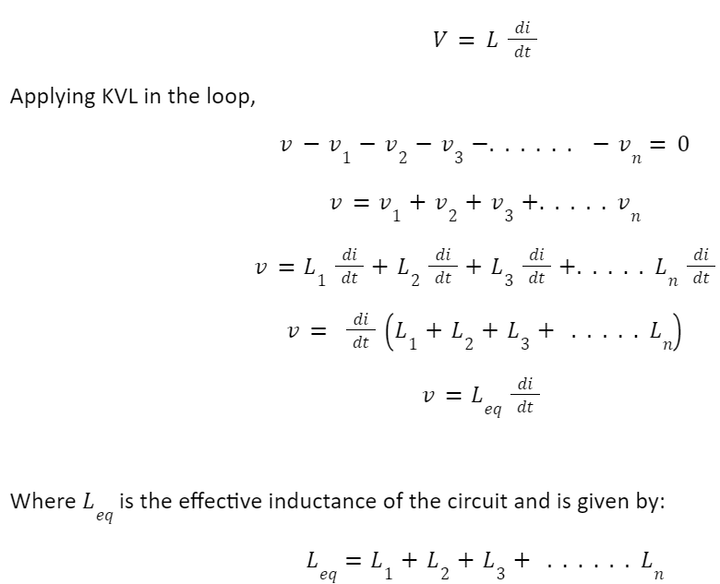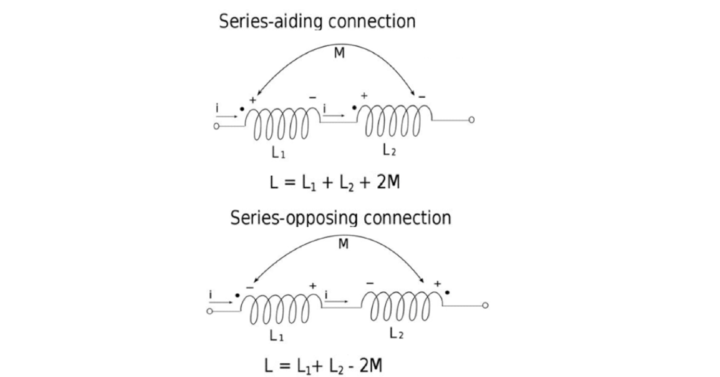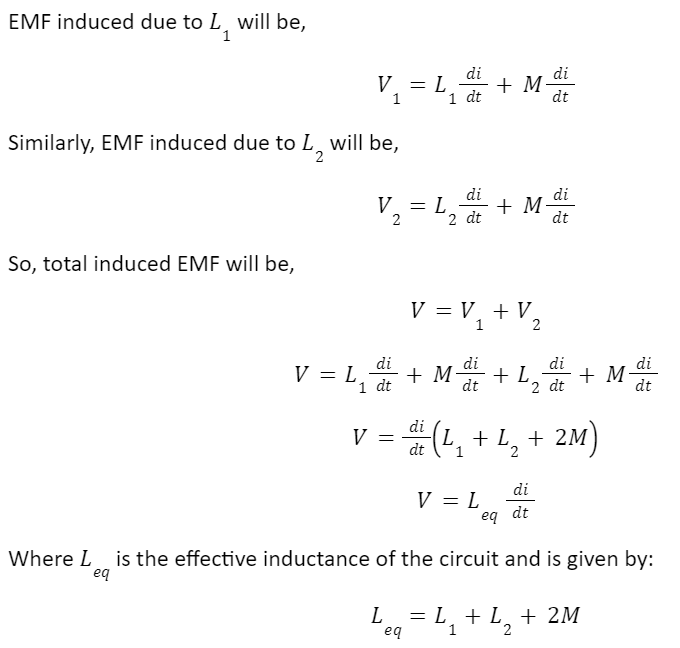- Home/
- GATE ELECTRONICS/
- GATE EC/
- Article
Inductors in Series
By BYJU'S Exam Prep
Updated on: September 25th, 2023

Inductors in series are the process of adding inductors in a sequence. In an electric circuit, an inductor is an electrical component that can be visualized as electrical inductance to store energy in its magnetic field. Power supplies, Transformers, Radios, RADARs, etc., are some applications of inductors or groups of inductors in series.
Any current-carrying conductor with inductive properties may be regarded as an inductor. The coils of conducting wire form an inductor. The article elaborates on Inductors in series, the equivalent inductance of circuits on connecting inductors in series, and the formula used in such connections.
Download Formulas for GATE Electronics & Communication Engineering – Control System
Table of content
Inductors in Series
The interconnection of inductors in series is a part of any complex network that can be reduced to a simple network by an equivalent inductor in series whose inductance is the sum of the individual inductors in series with no mutual inductance.
When inductors are connected in series, there is a certain voltage drop across each inductor for a given rate of change of current passing through it. For the rate of change of current, the greater the voltage drop means, the greater the inductance of the inductor.
Download Formulas for GATE Electronics & Communication Engineering – Digital Circuits
Equivalent Inductance of Inductors in Series
Consider a series connection of N inductors having equivalent circuits, as shown below. The same current flows through all the inductors as they are in series.

If a current I is flowing through an inductor having inductance L, the voltage V across the inductor is equal to,

Inductors in series are similar to that resistors in series. The equivalent inductance is the individual sum of all inductances when inductors are connected in series.
Download Formulas for GATE Electronics & Communication Engineering – Electronic Devices
Mutually Coupled Inductors in Series
The magnetic field of one inductor links with the other inductor when connecting the inductors in series. This phenomenon is known as magnetic coupling. This leads to either decreasing or increasing the overall equivalent inductance. Based on the aiding or opposing the overall equivalent inductance, they are classified as
- Differentially coupled or series of opposing
- Cumulatively coupled or series aiding
If the magnetic flux produced by the current through the inductors is in the opposite direction, it is differentially coupled because it will oppose the overall equivalent inductance. So, the overall equivalent inductance will decrease.
Suppose the magnetic flux is in the same direction. In that case, it is cumulatively coupled because it will aid the overall equivalent inductance, increasing the circuit’s net inductance.
Differentially Coupled Inductors in Series
In this type of connection of connecting inductors in series, the direction of current entering or leaving at the terminal of an inductor is in the opposite direction, as shown below:

Let M be the mutual inductance due to magnetic coupling between the inductance L1 and L2. The electric circuit representation can be drawn as:

Cumulatively Coupled Inductors in Series
On connecting Cumulatively Coupled Inductors in series, the direction of current entering or leaving at the terminal of an inductor is in the same direction as shown below:

Let M be the mutual inductance due to magnetic coupling between the inductance L1 and L2.


Inductors in Series Formula
When N number of inductors are connected in series (assuming no magnetic coupling), then the overall equivalent inductance is the sum of the individual inductance present in the circuit. Mathematically, Inductors in the series formula can be written as:




